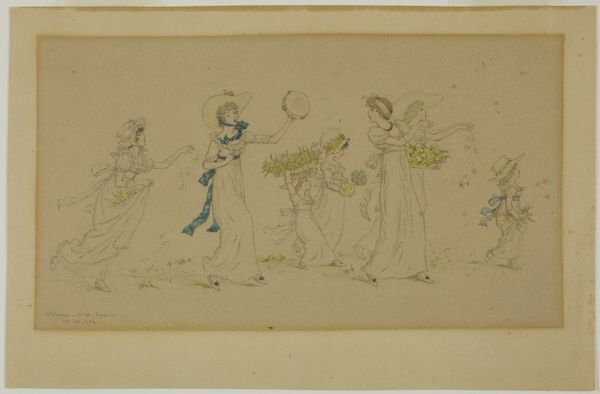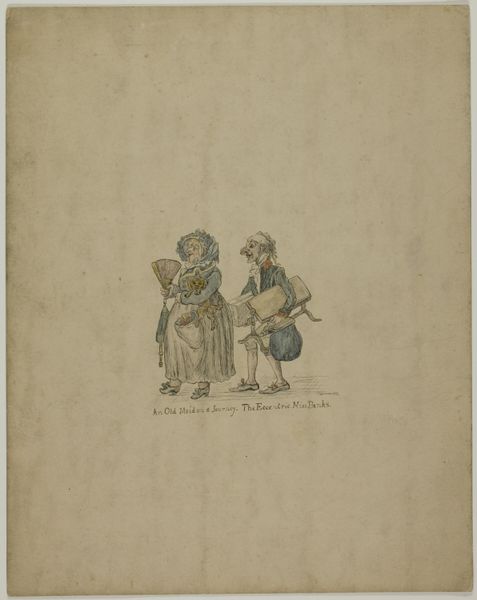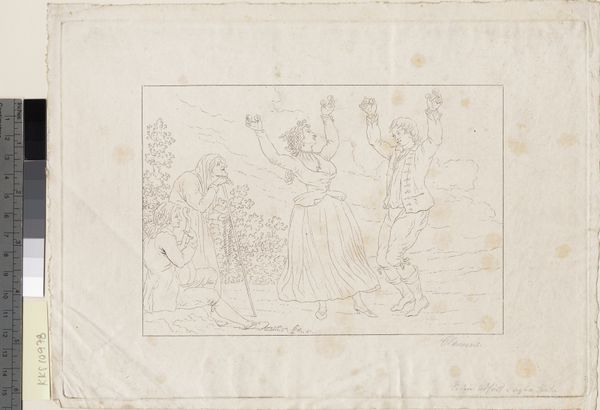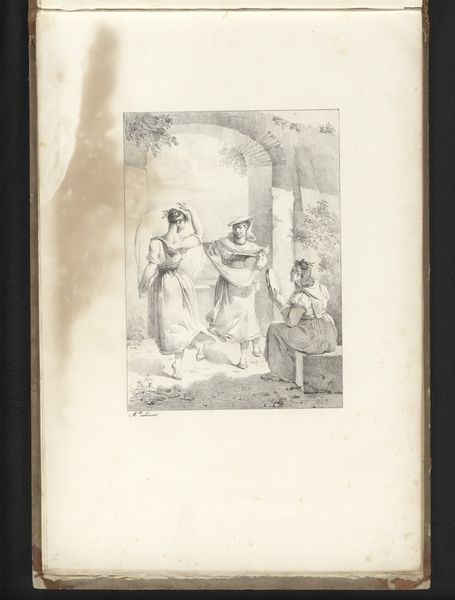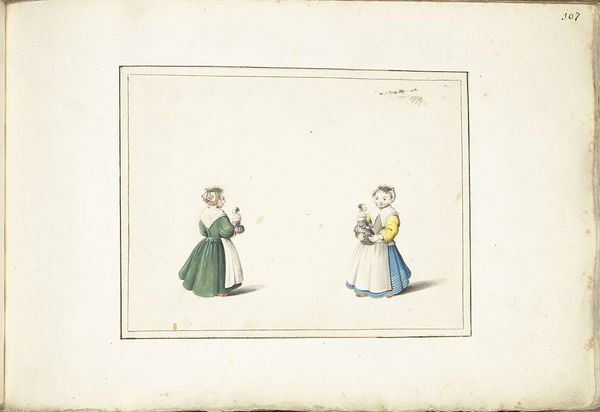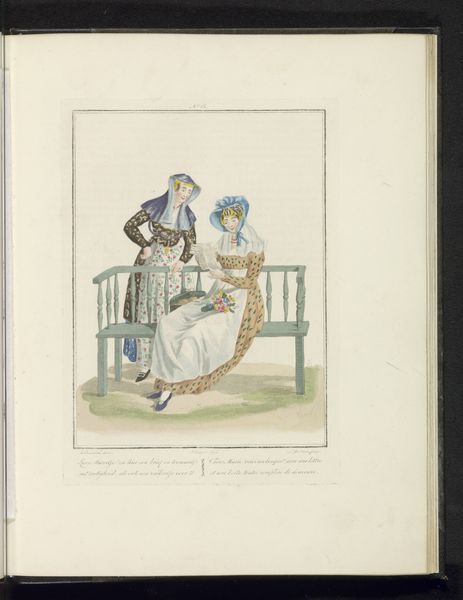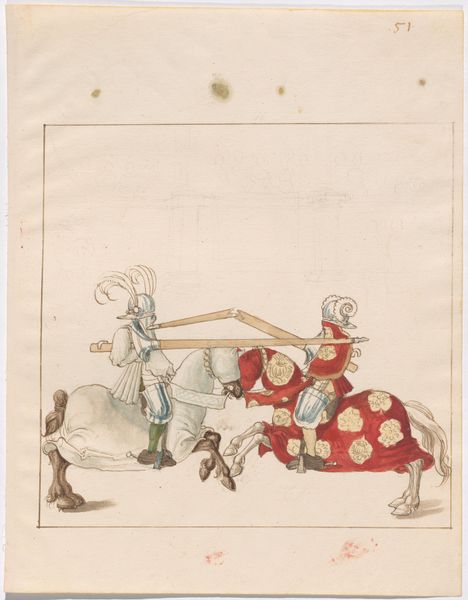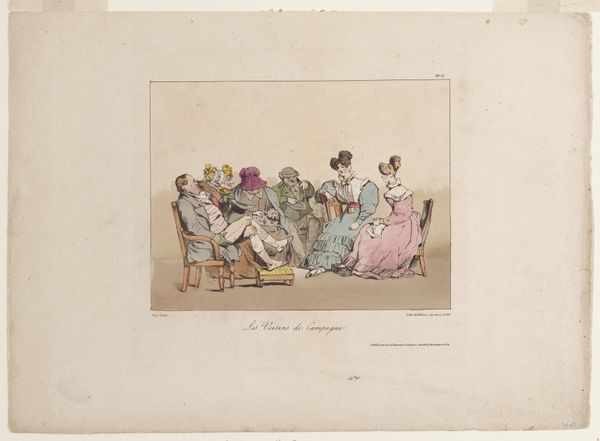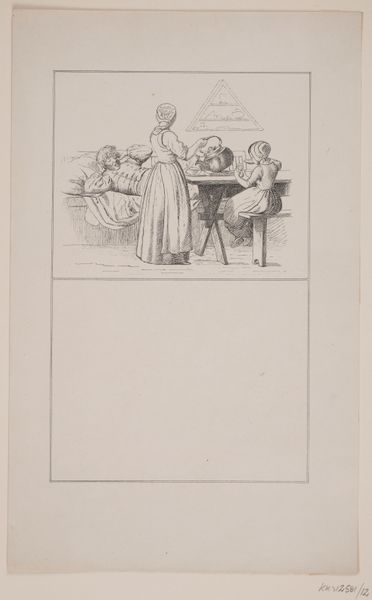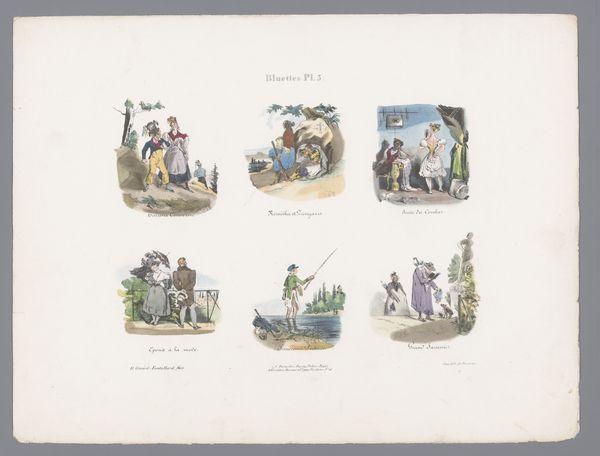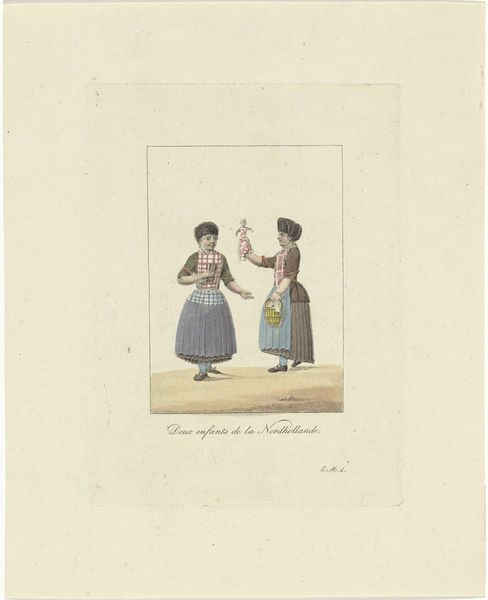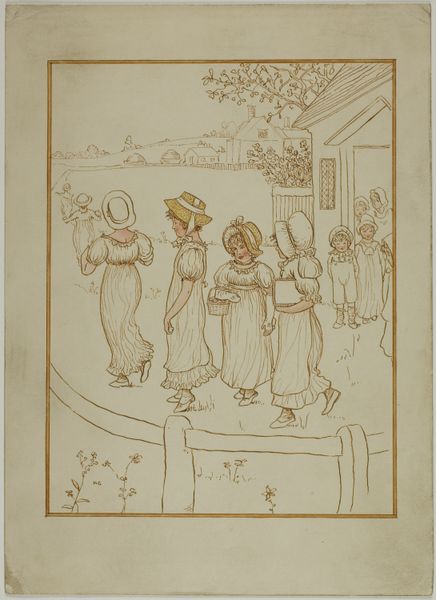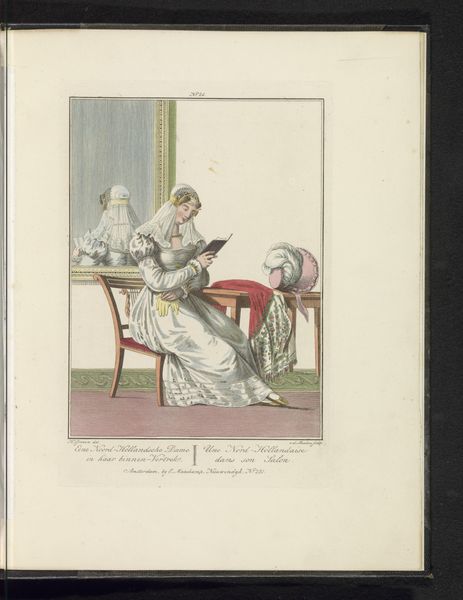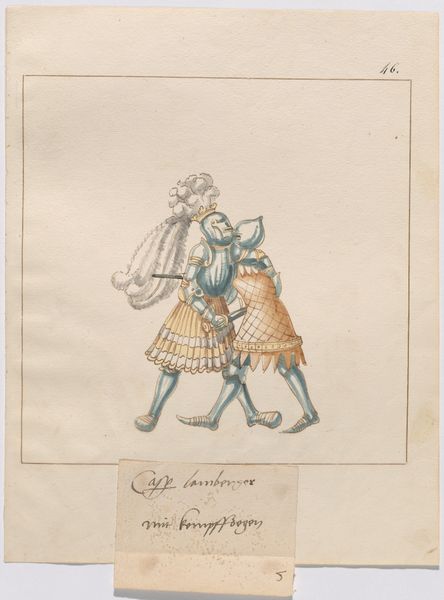
drawing, coloured-pencil, print, paper, ink, pastel
#
drawing
#
coloured-pencil
#
narrative-art
# print
#
arts-&-crafts-movement
#
landscape
#
figuration
#
paper
#
personal sketchbook
#
ink
#
pastel
#
miniature
Dimensions: 279 × 238 mm
Copyright: Public Domain
Curator: This piece is entitled "Study for Tip a Toe, from Marigold Garden" created by Kate Greenaway around 1885. It employs colored pencil, ink, and pastel on paper. It now resides here at The Art Institute of Chicago. Editor: It’s incredibly charming. There’s a lightness of touch, almost like a whisper. The delicate pastels evoke a feeling of childhood innocence and carefree play. Curator: The composition is quite interesting, isn’t it? Greenaway divides the work into two distinct registers. Above, we see a frieze-like depiction of girls playing. Below, there’s a detailed botanical illustration and a handwritten poem. The visual rhythm established by the girls mimics, in a way, the rhythmic nature of the verse itself. Editor: Absolutely. And considering the Arts and Crafts movement, which Greenaway was associated with, the deliberate integration of text and image highlights the movement's commitment to fusing fine art with the decorative arts. Curator: Indeed. The careful linework, particularly in the botanical study, exemplifies the attention to detail that was highly valued within that context. Think of it within the socio-political framework. Factory-made goods, though increasingly accessible, lacked the aesthetic merit valued by those hoping for the revival of handcrafted quality, right? Greenaway positions herself in deliberate opposition to this trend through art for a child’s imaginative life. Editor: The palette itself is carefully controlled: soft pinks, muted greens, touches of blue. It isn't just representational; these colours create a specific mood. It exudes nostalgia, hinting at an idealized past. And while ostensibly directed towards a juvenile audience, does the formal precision, and quite mature sense of space invite adults in equally? Curator: The perspective, especially in the top register, flattens the picture plane, drawing attention to the surface quality of the work, as though its more like a decorative scene or painted tapestry than true perspective rendering. She seems interested less in three dimensional rendering as the harmonious visual space. Editor: Well, considering it in its time, you almost anticipate mass production as a series of postcards perhaps—each frame or character its own unique print and iteration? Considering how often visual ephemera became signposts of modern city life and commodity, Greenaway has prefigured the power of those everyday interactions beautifully here. Curator: It’s tempting to read this piece as simply a nostalgic fantasy, but perhaps Greenaway subtly critiques the restrictions placed upon young women. She pictures their innocent frolics as if to highlight how ephemeral childhood innocence really is—her flower is an alert vanitas about time’s swift passing. Editor: A deceptively complex work then, layered with nuanced reflections on childhood, society, and the role of art itself. Curator: Yes. The poem, imagery, its division of surface; they all intertwine to reveal Greenaway’s astute sensibilities.
Comments
No comments
Be the first to comment and join the conversation on the ultimate creative platform.
